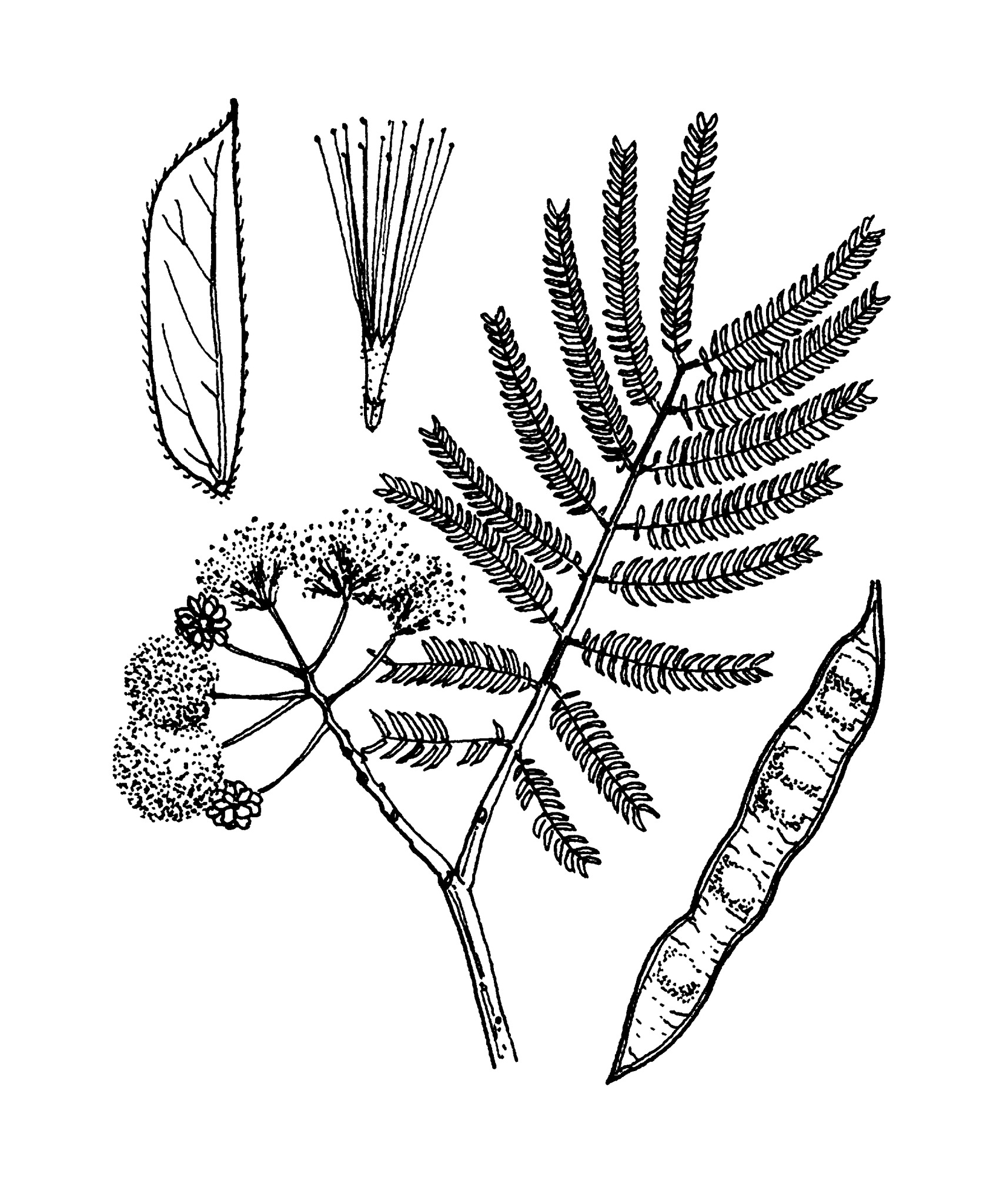
Commemorating F. del. Albizzi, a Florentine nobleman who introduced A. julibrissin and other plants to cultivation, c. 1790.
Small trees or shrubs without thorns or prickles. Leaves bipinnate, with prominent glands on the leaf stalk and main leaf axis; stipules soon shed. Flower clusters axillary, stalked. Flower heads round or cylindrical, mostly pink to yellow-green. Flowers 5-parted, calyx bell-shaped, petals small, stamens long and showy, united at the base into a tube, protruding. Fruit pod stalked or not, strongly compressed, not twisting or curving.
Name frequently incorrectly spelt Albizzia. Many species have been transferred to Paraserianthes. Albizia lebbeck (L.) Benth., Siris Tree (White Siris, Kokko, East Indian Walnut), from tropical Asia and Africa is cultivated and naturalised in Qld; it has massive flower heads 5-6 cm wide and is possibly native to Australia as there is a small population on Cape York.
About 120 tropical and subtropical species; about 6 species are native to Australia.
Seed after pre-treatment.
Various species have been used for medicines and timber.
Stamens united into tube at the base.
Nielsen (1979).
Source: (2002). Mimosaceae. In: . Horticultural Flora of South-eastern Australia. Volume 3. Flowering plants. Dicotyledons. Part 2. The identification of garden and cultivated plants. University of New South Wales Press.
